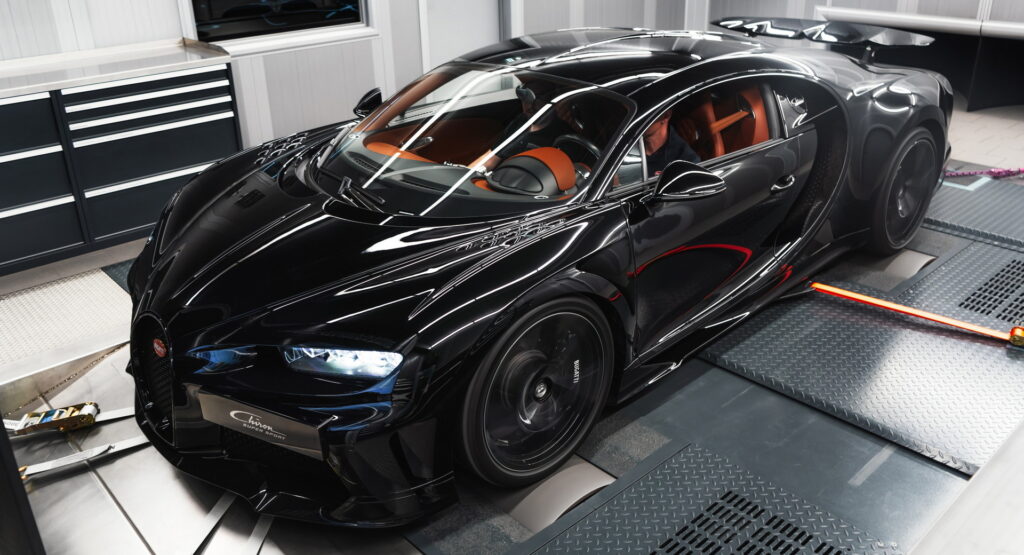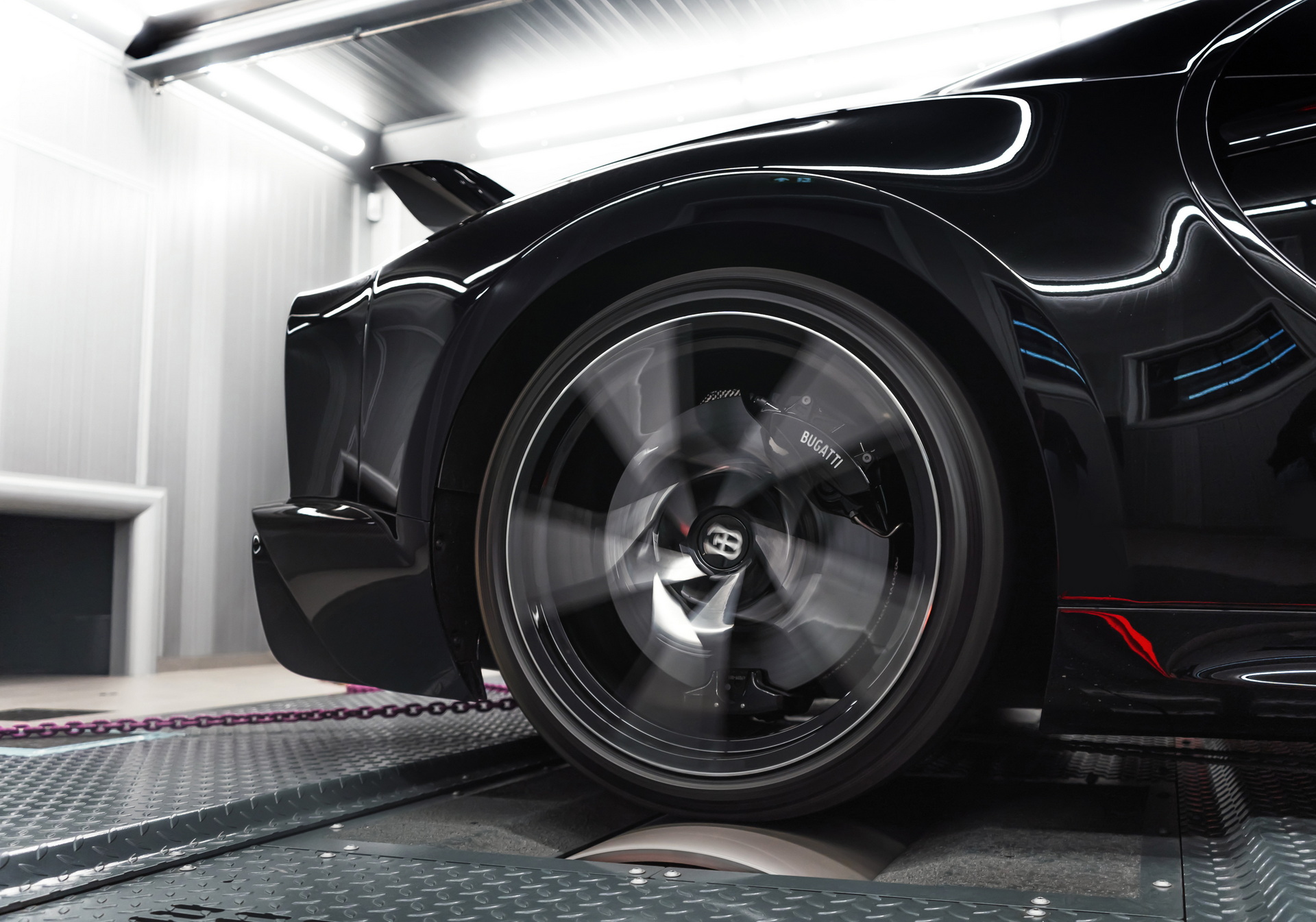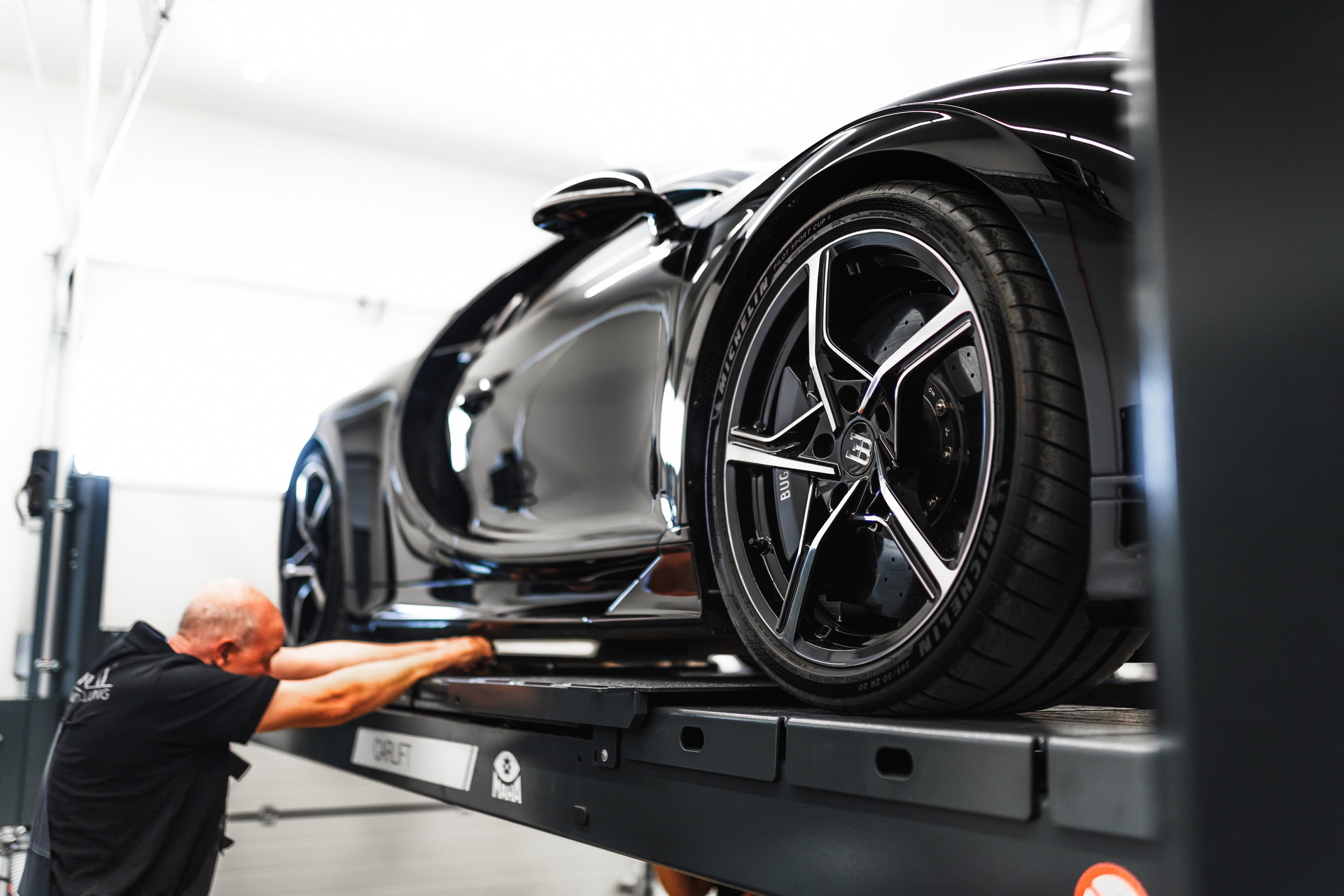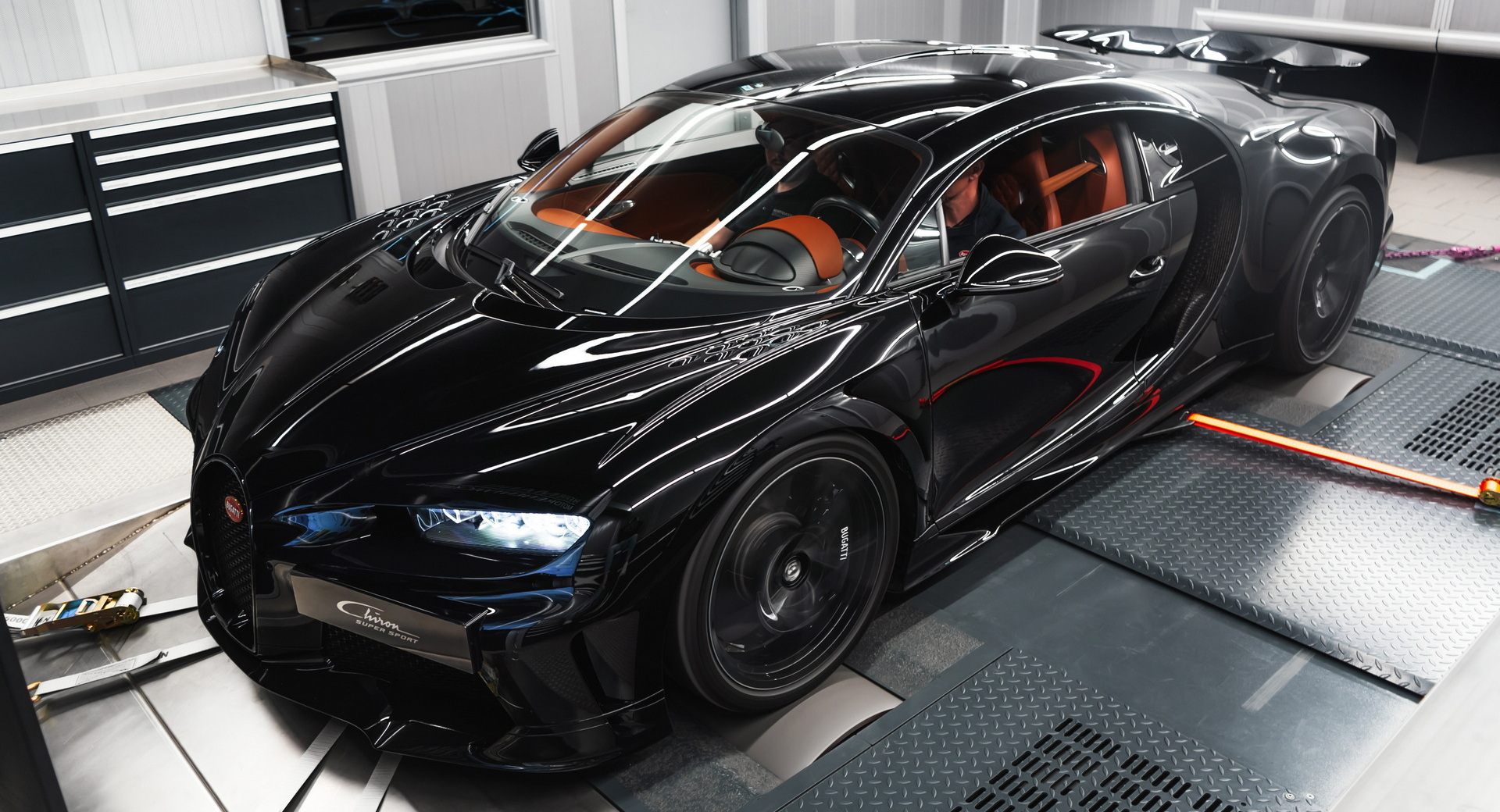Although it may now seem like dynamometers are common, they’re a serious and enormous piece of machinery. None more so than the one that Bugatti employs in order to test its hypercars.
Designed specifically for high-speed applications, the Bugatti dyno is capable of testing at speeds of up to 298 mph (480 km/h). Although that’s a massive top speed, it’s only slightly higher than the Chiron’s limited top speed of 273 mph (440 km/h). Even at lower speeds, though, the forces are enormous.
At 261 mph (420 km/h), the Chiron’s tires are revolving at a pace of more than 50 times per second, which can exert a force of about 4,000G on them. At those speeds, the air valve weighs as much as 121 lbs (55 kg), Bugatti claims.
Read Also: Watching A Bugatti Chiron On A Dyno Is Quite A Sight To Behold
Naturally, it’s not just the gravity that’s exerting enormous forces on the rig; the Chiron is, too. To ensure it remains safely affixed to the dyno at all times, the car must be held in place with 20 high-strength screws on the underbody that attach to specially designed adapter plates on the monocoque. Each plate is then tied to others with crisscrossing strong chains and anchored to the hall floor. The chains must be able to withstand up to 24 tons of force to keep the car in contact with the dyno at all times.
Unlike other four-wheel dynos in which each axle gets its own roller, Bugatti’s dyno has just one, to which all four wheels send their power. That, the company says, reduces wheel slip, flex, and loss of performance.
“On the all-wheel single-roller dynamometer, all the components can be tested under real driving conditions neutrally and comprehensibly,” said Michael Gericke, Bugatti’s engine developer. “Driving resistance levels which are identical to those on the road are simulated.”
That’s not just important for accurate readings, it’s part of what makes the machine capable of handling the enormous power of the Bugatti Chiron’s 8.0-liter W16 engine. With less slip and loss, the tires heat up less, allowing for higher speeds to be tested.
That also means, though, that the roller is quite heavy, tipping the scales at 3.5 tons and it has a rotating mass of around 1,587 lbs (720 kg). It also has a maximum braking power of 1,609 hp (1,200 kW/1,631 PS).
A massive fan in Bugatti‘s testing hall, meanwhile, can move up to 10,594,400 cubic feet (300,000 cubic meters) of air per hour to simulate realistic airstreams over the car and supply the engine and cooling systems with the necessary airflow.
“This means we can guarantee free and, above all, safe running, even at full load and top speed,” said Gericke. “We can also reproduce the tests at any time of the year and no matter what the weather. This helps us in our permanent search for technical perfection.”
In the end, it’s all necessary to test the car and determine that it indeed delivers its claimed 1,596 hp (1,190 kW/1,618 PS) and 1,180 lb-ft (1,600 Nm) of torque.


















